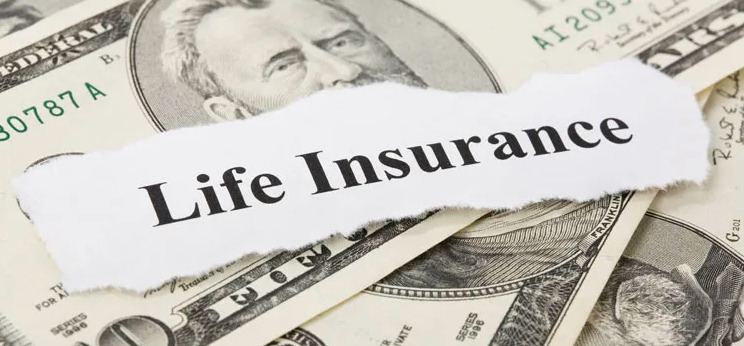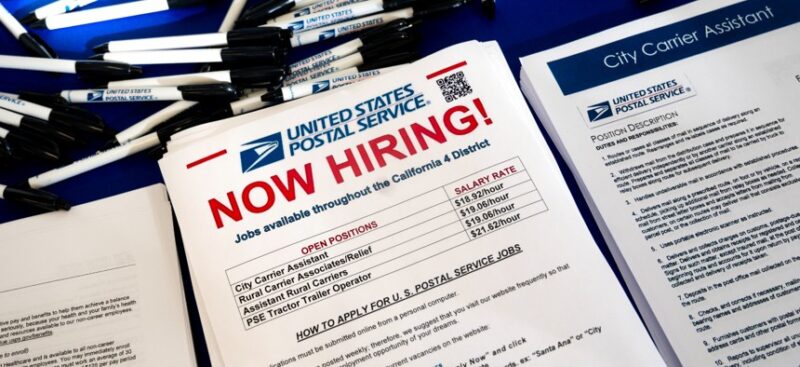Many federal employees have realized that upon retiring from federal service, the amount of time from the day of retirement to the newly retired employee receiving his or her first full CSRS or FERS annuity check may be in the range of three to eight months.
While the newly retired employee will receive (for a period of two months to as much as 10 months )“interim” annuity checks (which are a percentage of what the full annuity check they are entitled to), for many new retirees this could turn into a cash flow problem during the interim annuity payment period.
This column discusses some of the problems causing the delays in OPM’s sending the first full annuity payment to annuitants and what employees who will be retiring in the next few years should do in anticipation of a possible cash flow problem during the early months of their retirement.
The Office of Personnel Management (OPM)’s retirement office processing center in Boyers, PA is responsible for processing retirement applications. OPM is well aware of the increasing processing delays in retirement applications. The problem is nothing new . It has gone on for many years but has gotten worse in recent years due to the increasing number of retiring employees. The OPM retirement department keeps a monthly tab on retirement application processing and delays and publishes the monthly data.
How To Expedite Your Retirement Application
Some retirement applications are processed (that is to say, adjudicated) faster than others. This means that some annuitants receive their first full annuity checks sooner than other annuitants. Included with the first full annuity check will be retroactive payments owed on the previous partial annuity payments. According to OPM, the one thing that retiring federal employees can do to expedite the time for OPM’s retirement office to process retirement applications is for employees to make sure that the portion of the retirement application they are responsible for is fully complete. Complete applications include providing all necessary forms besides the application form itself.
The following is a list of the necessary forms and documents to be submitted in order to fully adjudicate a CSRS or FERS retirement application:
1. Application for immediate federal retirement: For CSRS/CSRS Offset employees – Form SF 2801; for FERS/ “Trans” FERS employees – Form SF 3107;
2. The notarized consent of a spouse if the spouse has agreed to less than a maximum survivor annuity benefit;
3. In case a retiring employee has been divorced and a former spouse was awarded a portion of the employee’s CSRS or FERS annuity, a certified copy of the divorce decree or court order;
4. Documentation of five years of coverage (in particular; the last five years) under the Federal Employees Health Benefits (FEHB) program in order to maintain health insurance coverage throughout retirement;
5. Documentation of five years of coverage during at least the last five years of service, under the Federal Employees Group Life Insurance (FEGLI) program;
6. FEGLI life insurance election form for maintaining FEGLI coverage during retirement – SF 2818;
7. Documentation of creditable civilian service that provides evidence of an employee’s Federal service;
8. Documentation of military service, if any;
9. Updated beneficiary designation forms including for CSRS, Form SF 2808; for FERS, Form SF 3102; and for FEGLI, Form SF2823. The other major beneficiary form for the “401k” Federal Savings Plan ( “401k” Federal Savings Plan ), form “401k” Federal Savings Plan -3 should already be on file with the “401k” Federal Savings Plan Service Office; and
10. Voluntary contribution election for CSRS employees who have established a Voluntary Contributions Program (VCP) account.
3 Primary Reasons Federal Retirement Applications Are Delayed
OPM cites three main reasons for delay in processing retirement applications, namely:
- A retirement package is incomplete – for example, important documentation is missing or documents are lacking a signature;
- A retirement application contains elements that create additional processing requirements such as a court order or a FERS annuity supplement; and
- The applicant has to make multiple decisions such as whether to pay a deposit for temporary (non-deposit) federal service or prior military service; to make a redeposit for withdrawn CSRS or FERS contributions; or to make voluntary contributions to the CSRS Retirement and Disability Fund under the Voluntary Contribution Program.
Also, it is important to keep in mind that OPM’s retirement processing unit tries to process applications in the order in which the applications arrive. But retirement application processing can take longer in the case of retirement applications accompanied by a court order to pay benefits to a former spouse.
Given the reality of the situation and accepting the fact that OPM’s retirement office processing center will be facing a retirement application backlog for most probably a very long time as more and more employees retire, what should employees who intend to retire within the next five to 10 years do in order to solve their possible cash flow problem while waiting for their first full CSRS or FERS annuity check? The following are some suggestions of what retiring employees can do — and what they should not do.
5 Things Retiring Federal Employees Can Do
1. Build up unused annual leave.
When an employee retires from federal service, any unused annual leave will be paid to the retiring employee in a lump sum payment. This lump sum payment – fully subject to income and payroll taxes – is paid by the retiring employee’s payroll office within a few weeks after the employee retires. Some employees can get get paid for as much as six weeks of unused annual leave and can use this payment to help pay their bills while waiting for their first full annuity check.
2. Seek employment, at least on a temporary basis.
After retiring from federal service, many employees seek employment in the private sector, at least for a few years. In so doing, they can earn as much as the want without affecting their CSRS or FERS annuities. The only pension income that could be affected by salary or self-employment income is the FERS annuity supplement which is subject to an earnings test. FERS annuitants who retire before age 62 and are eligible for the FERS annuity supplement should be aware that the annuity supplement is not paid during the “interim” annuity period. This means that a FERS annuitant’s working during the “interim” annuity period, and for that matter during the annuitant’s first year of retirement, will not affect the FERS annuity supplement.
3. Start “401k” Federal Savings Plan ( “401k” Federal Savings Plan ) withdrawals.
A retiring employee can start withdrawing from his or her “401k” Federal Savings Plan account following at least 30 days following his or her retirement date. With the new and more flexible “401k” Federal Savings Plan withdrawal rules perhaps starting later this year, annuitants will have more flexibility in withdrawing from their “401k” Federal Savings Plan accounts. Annuitants should be aware that since the “401k” Federal Savings Plan has to last as much 30 to 40 years of retirement, annuitants should be somewhat conservative in the amount of withdrawals from their “401k” Federal Savings Plan accounts during the early years of their retirement. Penalty-free traditional “401k” Federal Savings Plan withdrawals can be made if the employee retires from Federal service sometime during the year after the year the employee becomes age 55.
4. Start receiving monthly Social Security retirement benefit as early as age 62.
Federal retirees should be careful about starting to receive their monthly Social Security retirement benefit at age 62 since starting one’s Social Security before full retirement age (ages 65 to 67, depending which year an individual was born) will result in a permanent reduction to one’s Social Security retirement benefit. Drawing Social Security before one’s FRA and working could also reduce or eliminate one’s monthly benefit due to the Social Security earnings test. A married or formerly married individual may be eligible to receive half of a spouse’s or ex-spouse’s Social Security benefits (“spousal” or “ex-spousal” benefit) or all of a deceased spouse’s or a deceased ex-spouse’s Social Security benefit (“widow /”widower” benefit).
5. Increase one’s financial liquidity, perhaps to as much as one year’s worth of one’s average monthly expenses.
Financial advisors generally recommend that all individuals – whether working or retired – should always own a certain amount of liquid assets. Liquid assets include a passbook savings account or a money market account. These liquid assets should ideally be equal to at least three to six months of their average monthly expenses. Retiring employees therefore should have at least six months to a year’s worth of their average monthly expenses invested in liquid assets. These liquid asset funds will be used to help pay their monthly expenses during the “interim” annuity period.
What Retiring Federal Employees Should Not Do
Taking out short-term loans such as home equity loans is not a good idea and highly not recommended. Adding more debt to one’s retirement years when there is generally less income is not a good move. Employees and annuitants should also be aware that under the Tax Cuts and Jobs Acts of 2017 taking effect Jan. 1, 2018, all home equity loan interest is nondeductible if the loan proceeds are not used to improve one’s home. This means that the interest on home equity loans used to pay personal expenses is nondeductible on one’s income taxes.
Shortly before retiring, a retiring employee could take out a general purpose “401k” Federal Savings Plan loan. However, the loan must be paid back within 90 days following the employee’s retirement date. If the loan is not paid back in full within those 90 days, then the unpaid balance will be considered a taxable distribution – subject to federal and state income tax – for that year. If the annuitant is under age 59.5, then the taxable distribution is subject to a 10 percent early withdrawal penalty.











